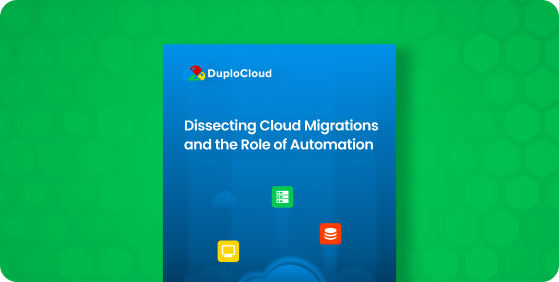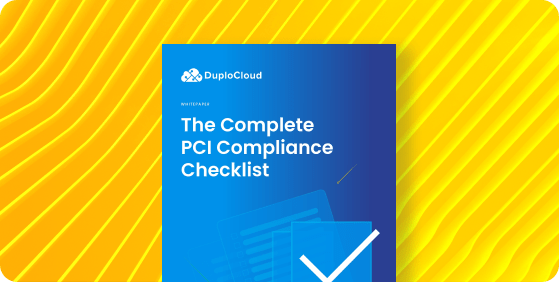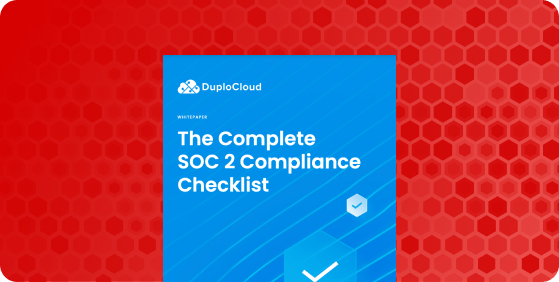Avoid common compliance pitfalls and mitigate risk without sacrificing the quality of your product
The Necessity of Compliance
Congratulations! By getting funding, you’ve cleared the first big hurdle on your startup journey. Now it’s time to bring your product across the finish line.
Resource management in this stage of development is critical, especially when there’s so much to get done. However, it’s important not to let compliance fall by the wayside in your quest to optimize budgets and reduce time-to-market.
Navigating compliance regulations and security requirements are some of the biggest challenges startups face. When we surveyed 300 senior leaders in software development and engineering, we found that achieving compliance was their number one concern, regardless of their growth stage. If you aren’t taking security and compliance into account from the get-go, you’ll likely run into significant issues pre- and post-launch, such as:
- An increased potential for security flaws that lead to compromised data via theft or accidental exposure.
- Delayed timetables and increased costs as your team attempts to right the ship.
- Damaged reputation from the PR fallout.
- Hefty fines.
- A loss of the ability to do business through regional lockout and investor hesitancy.
We’ve compiled this guide to help startups address their compliance needs while continuing to deliver high-quality products. We’ll lay out the most common compliance challenges and the consequences startups face if they fail to prioritize them. We’ll also provide information on resources to help you automate and monitor most of the compliance process, leaving you to focus your time and energy on delivering value to key stakeholders and customers.

Common Compliance Challenges
While a startup’s compliance needs will differ depending on their industry and required data sets, the challenges they face are often very similar. Any one of these issues can become a serious roadblock to compliance; many startups will frequently face most or all of them on their road to launching a product.
A Lack of Resources and/or Knowledge
Bringing products into compliance requires an intimate understanding of the relevant compliance requirements, the consequences of failing to comply with these regulations, and the working details of the product itself. Doing so allows businesses to align the specifics of their product alongside established guidelines and develop processes that provide a baseline of security and compliance requirements that employees will follow in their day-to-day work to mitigate risk.
To do this effectively, many large companies rely on internal compliance officers to track compliance progress, develop internal processes, build training programs, and stay current with the latest laws and regulations. They are also responsible for reporting and remediating compliance breaches if and when they occur.
However, startups likely won’t have the resources available to hire a dedicated compliance officer, leaving compliance to employees who must now split their time between this and tasks like software development or project management. As these individuals brush up against a lack of time, knowledge, or resources, tracking compliance can often become a secondary concern.
Long Compliance Lead Times
Achieving compliance requires a significant time commitment. Not only will developers need to study compliance requirements and implement them into the product; but some compliance standards like SOC 2 also require a considerable lead time for the compliance evaluation process. This requires evaluating infrastructure and development processes, remediating gaps, and undergoing a third-party audit. From start to finish, this can take anywhere from several months to a year or more, depending on the size and complexity of the product.
Meeting the necessary compliance requirements means thinking about them early in development. For startups rushing to bring their product to market, this process can fall by the wayside, ultimately leading to delays at the end of the project as compliance requirements bubble up to the surface.
A Complex and Often Moving Target
Successfully aligning your product with compliance regulations requires understanding convoluted laws and lengthy lists of standards. These often change as technology advances, best practices are updated, or new legislation is introduced. Plus, the requirements themselves can seem nebulous as they attempt to provide common compliance frameworks for every possible business model or network infrastructure permutation. Without an automated yet considered approach, achieving compliance can often seem insurmountable.
| Did you know? | DuploCloud automatically adheres to stringent control sets like PCI DSS, HIPAA, and HITRUST at the infrastructural level, taking the guesswork out of meeting compliance across a variety of industries and use cases. |
Consequences of Failing Compliance
As your startup works to develop quality products, attempting to meet essential compliance requirements simultaneously can feel like playing against a stacked deck.
Even so, it’s important to face these compliance challenges head-on and ensure your product meets them. Failure to do so can introduce numerous additional pain points to your startup journey, ranging from inconvenient yet costly roadblocks to grave consequences that can significantly impact your ability to generate revenue or funding.
| Delayed Timetables | Receiving a failing compliance grade can introduce significant delays to product delivery as teams work to remediate issues and resubmit their products, greatly harming time-to-market KPIs. |
|---|---|
| Reputational Damage | Failing compliance shows a lack of care and attention to the finer details of bringing a product to market, which can cause potential customers to think twice before using your product. |
| Loss of Future Funding | In addition to taking a PR hit with the public, startups that fail to achieve compliance may find sourcing additional funding more difficult as VC firms look for safer, more reliable ways to see returns on their investments. |
| Loss of Revenue | If your business is out of compliance, it may lose the ability to generate revenue. For example, failing PCI DSS compliance may prevent your startup from being able to accept credit card payments, while failing GDPR compliance may lock you out of doing business throughout Europe. |
| Hefty Fines | Startups that fail compliance won’t just lose out on revenue; many regulations also impose stiff fees for each incident of non-compliance. For example, if your credit card payment system doesn’t adhere to PCI DSS guidelines, you may be hit with fines of up to $500,000 per incident. Meanwhile, British Airways was recently fined £20 million for failing to comply with GDPR security standards. |
How to Juggle Compliance Along With Other Priorities
Achieving compliance alongside other tasks should be a fundamental aspect of any startup’s workflow. Here are a few tips to help you juggle those needs alongside developing, marketing, and funding a quality product.
Compliance Is a Journey, Not a Destination
There is no one-size-fits-all approach to achieving compliance, and you can’t flip a switch to instantly make a non-compliant application compliant. And once you’ve aligned your product with the appropriate compliance requirements, your work doesn’t just stop there. Compliance is a process of iteration and improvement that must be seen as a constant part of your product’s lifespan.
For example, the SOC 2 compliance process can take several weeks to complete and requires yearly audits to remain in effect. Meanwhile, HIPAA compliance is a framework that doesn’t rely on “pass” or “fail” metrics, and audits occur at random or if an organization has received complaints.
It’s important to consider and implement compliance standards now, not when you’re about to file your IPO. That way, you’ll never be caught off guard if and when an audit occurs.
Regularly Perform Self-Audits
You won’t know what actions to take to bring your product into compliance unless you know where it currently stands. Completing a voluntary audit of your infrastructure, development processes, and workflows will give you the best view into the current state of your product, arming you with the knowledge you need to improve it.
While audits can often be long, drawn-out affairs, they can start as simply as asking yourself what type of data your business comes in contact with and whether there are standards that dictate how that data is collected and stored. For example, HIPAA includes specific rules about how companies must safeguard electronic protected health information (ePHI), and if your application doesn’t adhere to those rules, it must be remediated.
You should also investigate your infrastructure and development processes for security gaps and legal hangups. If you find that they’re out of alignment with current compliance standards, make plans to adjust and fix them.
If you don’t have the knowledge or overhead to complete an audit on your own, consider bringing on a third-party auditor to conduct an investigation for you. Their tools, expertise, and impartiality will help you discover compliance gaps you may not even realize you have.

Add Compliance Action Items to Decision-Making Processes
The best way to keep compliance top of mind is to make it a dedicated line item in meetings and other spaces where decisions are made.
For example, if you’re discussing whether you have the bandwidth to add a new feature, consider asking what it would take to bring the feature into compliance or whether its addition would affect the compliance of the rest of the product. When hiring additional staff, look for candidates with experience in the necessary compliance frameworks. If you already have the requisite staff, consider scheduling compliance workshops to train them.
Once compliance becomes a natural part of decision-making, it becomes an organic part of your development roadmap.
Set Aside Plenty of Time and Resources
Some compliance frameworks, like SOC 2 or HITRUST, have lengthy audit processes that require extensive investigations from third-party auditors. These processes also come with fees that must be paid before the organization can award a compliance certificate.
Be sure to investigate your required compliance framework and bake these timelines and costs into your management plan. That way, you can allow these processes to run parallel with development, ensuring that audit completion and application delivery happen as close to each other as possible.
Rely on Automation to Simplify Compliance Processes
While every organization has fundamentally different needs, manually configuring your infrastructure to map them to compliance requirements is difficult (if not impossible) to scale and will often leave you one step behind any issues that arise.
Instead, rely on tools that can automate security processes like configuration, data encryption, and access management to reduce the manual load on your developers. Plus, use automated monitoring tools to alert you if your application comes out of alignment with your required compliance frameworks so you can address these issues quickly.
| Did you know? | 81% of enterprise-stage developers report that no-code/low-code cloud automation adoption had significantly approved their ability to meet software compliance requirements. |
Helpful Compliance Resources to Get You Started
While no single guide could provide a comprehensive look at every possible compliance framework in use around the world, the following list provides a brief glimpse of some of the most common compliance regulations your business might encounter while bringing a product to market. We’ve also included links to helpful resources to start your compliance journey off on the right foot.
DuploCloud: An Essential Tool for Achieving Compliance
Achieving compliance at the growth stage (and beyond) requires a ground-up approach that positions it as an integral part of software development, project management, key decision making, and the overall culture of your startup.
A great way to bring this culture to the forefront is by implementing tools that can automate much of the configuration and instance provisioning that goes into building a compliant infrastructure.
DuploCloud’s DevOps Automation Platform can make that happen. Here’s how:

DuploCloud allows startups to take compliance seriously and make it a core part of their development pipeline while enabling them to focus on bringing better products to market faster than ever.
Plus, as the cost of hiring dedicated DevOps engineers often puts them out of reach of most startups, DuploCloud can automate many of their essential tasks, allowing lean startups to reap the same benefits without spending their limited budget on personnel.
Want to find out how DuploCloud can make compliance a breeze for your business? Contact us today and sign up for a free, 30-minute demonstration.









